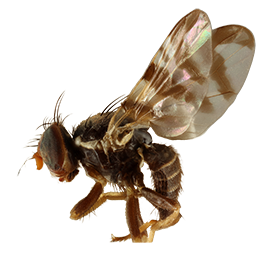Diagnosis
Morphological – adult
Rhagoletis cerasi has a generally dark brown/black body colour except for a bright yellow scutellum and pale/white lateral band on the thorax extending anteriorly from the base of the wing. It possesses a unique wing colour pattern with a short broad transverse fuscous band towards base of wing, a broad transverse fuscous band across centre from anterior margin to hind margin and enclosing r-m crossvein, a short narrow transverse fuscous band from anterior margin to vein R4+5 and an inverted L-shaped band at apex of wing, the stem of which encloses dm-cu crossvein.
Morphological – larvae
See Pest Fruit Flies of the World – Larvae.
Molecular
DNA barcoding
Diagnostic BOLD reference data available.
PCR-RFLP Test 1
BsrI: Data not available
HinfI: Data not available
HhaI: Data not available
Sau3AI: Data not available
SnaBI: Data not available
SspI: Data not available
Vspl: Data not available
PCR-RFLP Test 2
Data not available
Gallery
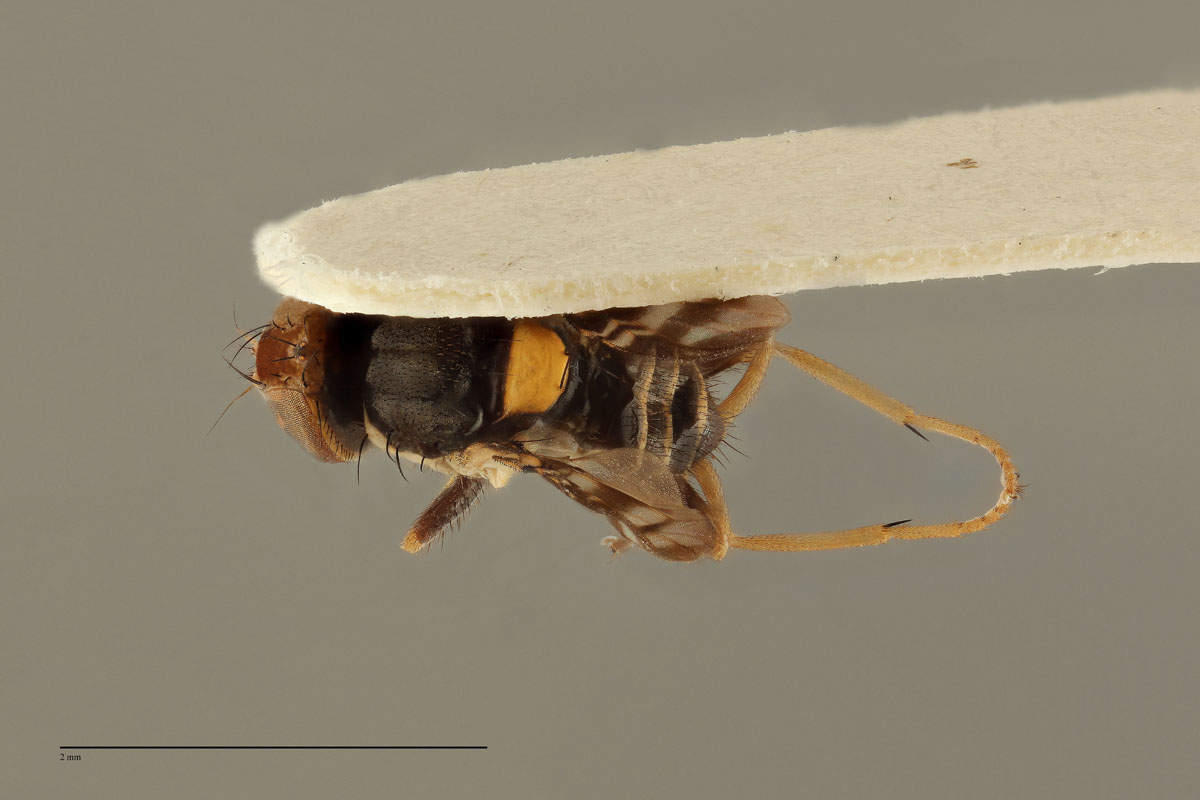 link
linkRhagoletis cerasi - Entire Body Dorsal Classic RCR001
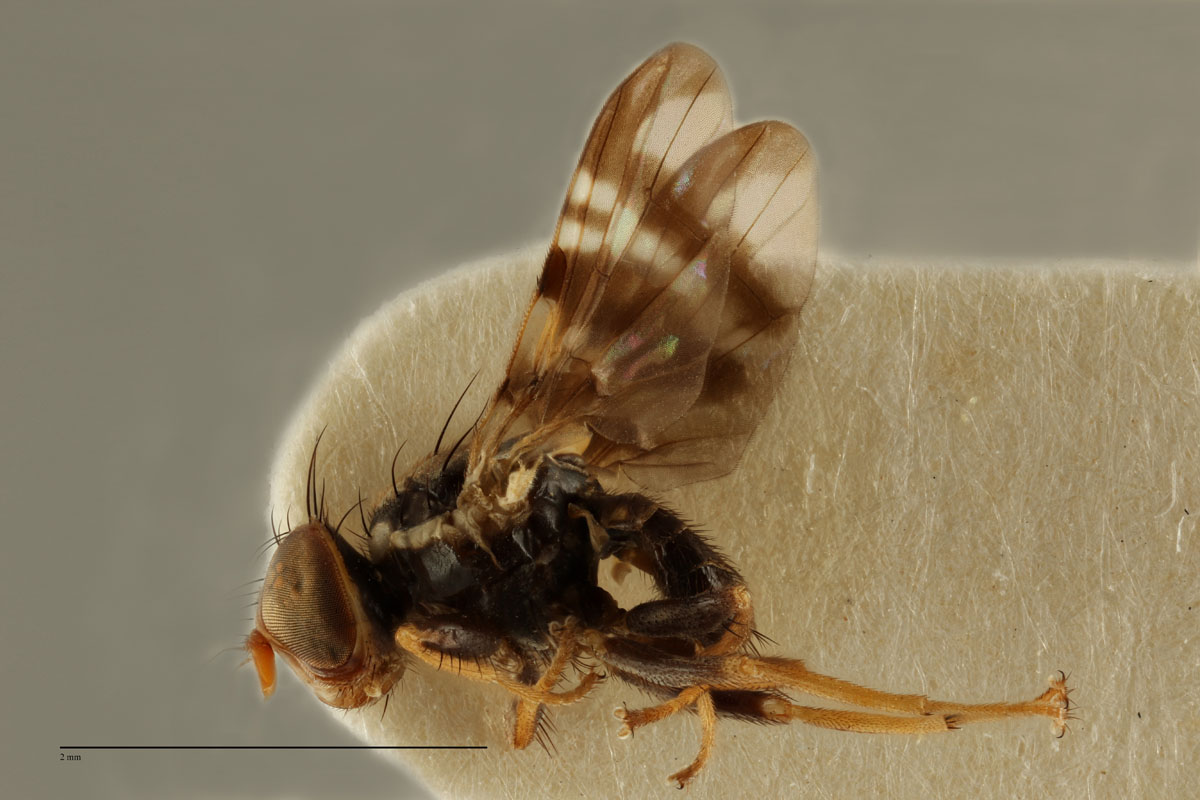 link
linkRhagoletis cerasi - Entire Body Lateral Classic RCR001
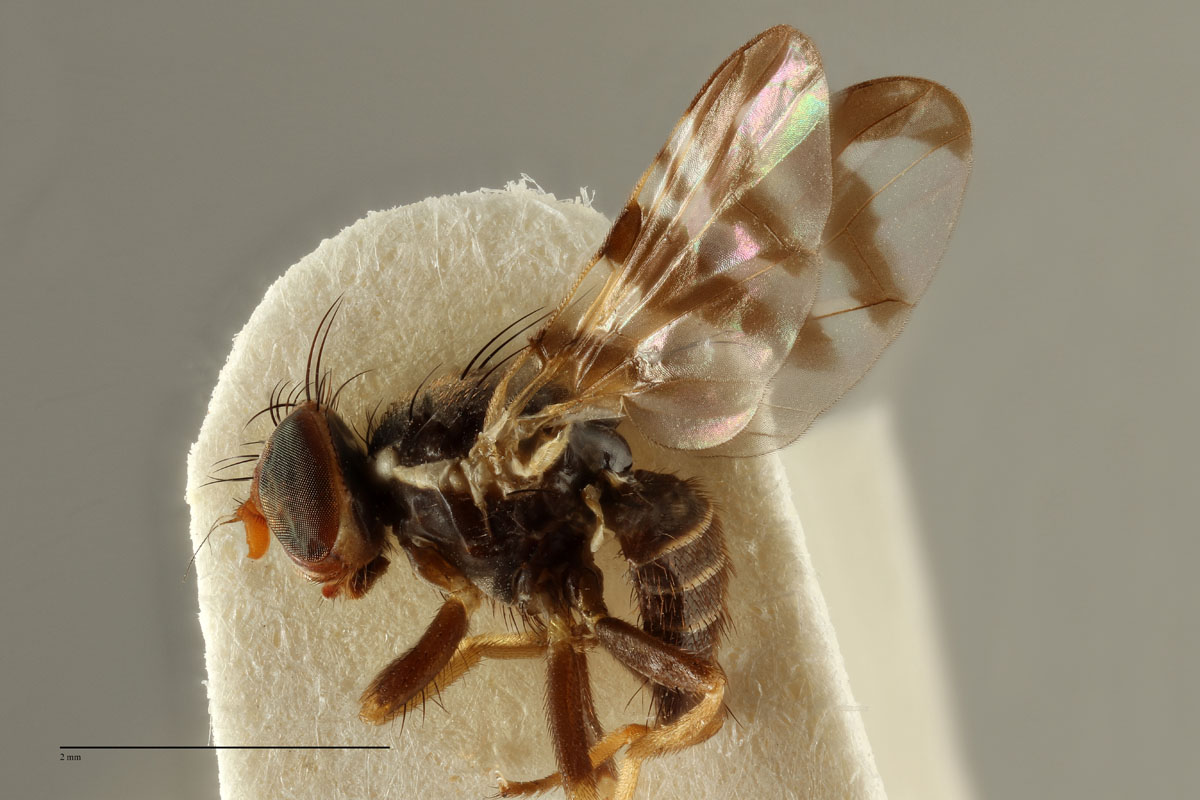 link
linkRhagoletis cerasi - Entire Body lateral Classic RCR002
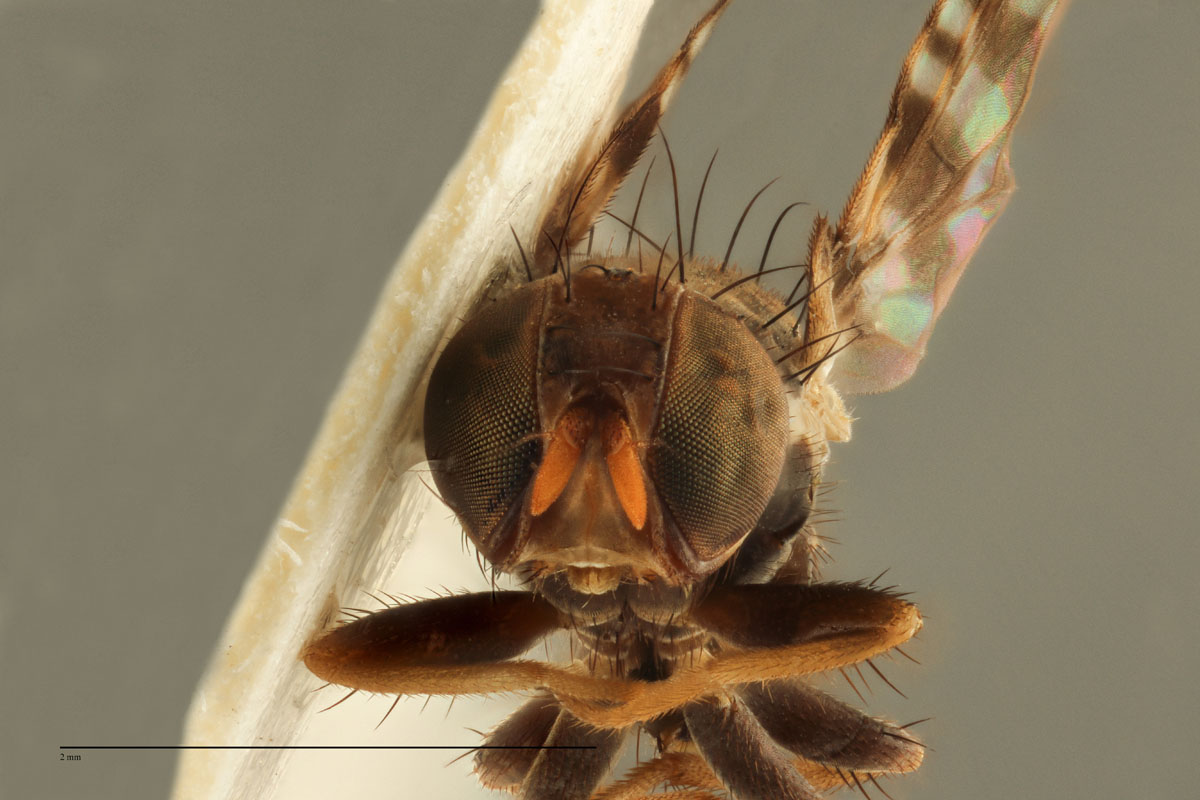 link
linkRhagoletis cerasi - Head RCR001
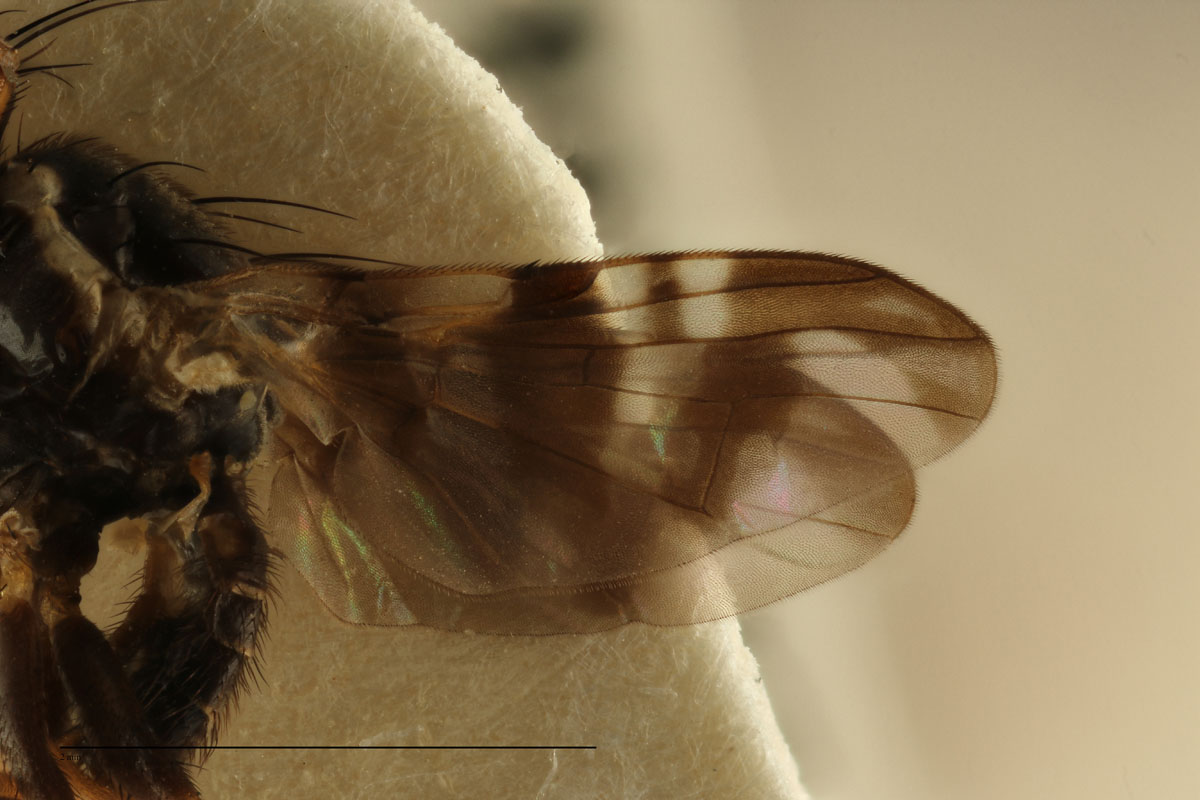 link
linkRhagoletis cerasi - Left Wing Classic RCR001
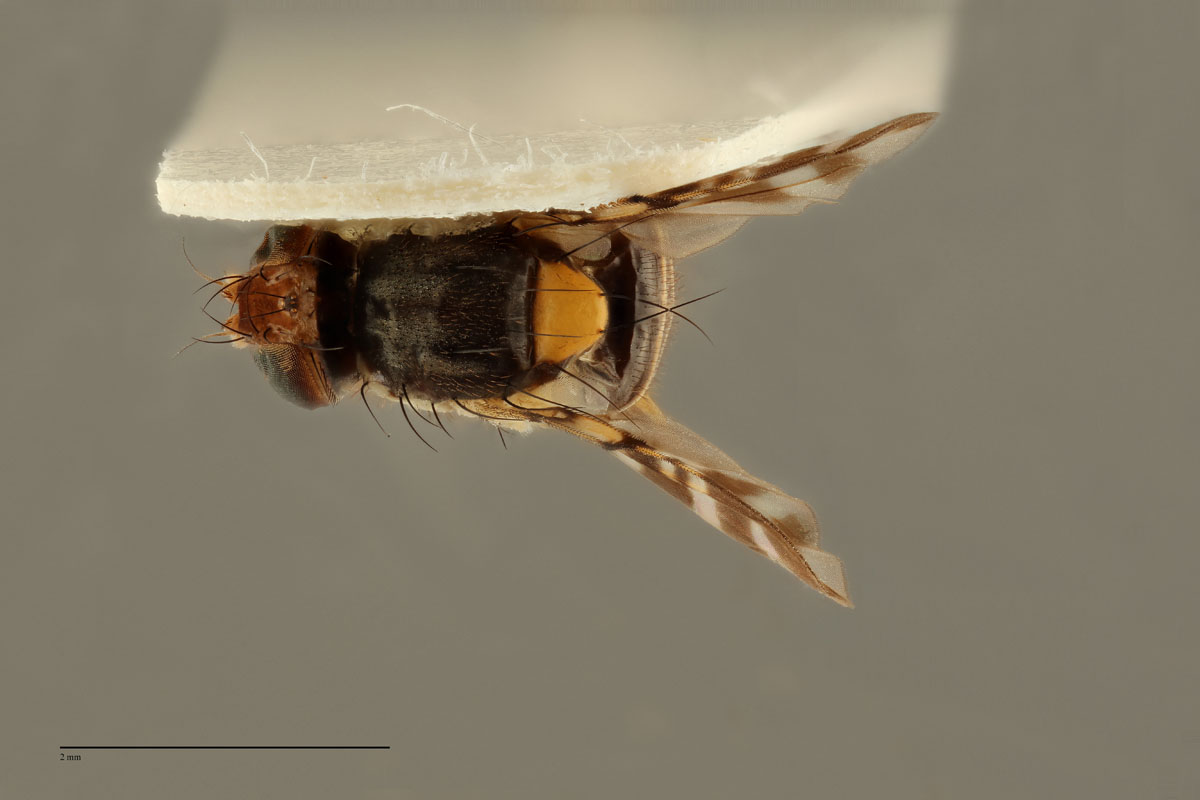 link
linkRhagoletis cerasi - Scutum Classic RCR002
Host Range
Recorded from family Caprifoliaceae (Lonicera species) and family Rosaceae (Prunus species).
Distribution
Northern Europe – Austria, Belgium, Bulgaria, Croatia, Czech Republic, Denmark, Estonia, France, Germany, Greece, Hungary, Italy, Latvia, Lithuania, Moldova, Netherlands, Norway, Poland, Portugal, Romania, Russia, Serbia, Slovakia, Spain, Sweden, Switzerland, Ukraine
Central Asia – Georgia, Iran, Kazakhstan, Kyrgyzstan, Tajikistan, Turkey, Turkmenistan, Uzbekistan
North America – a recent invasive (2015) to North America (southern Ontario, Canada and New York State, USA) (Wakie et al. 2018)
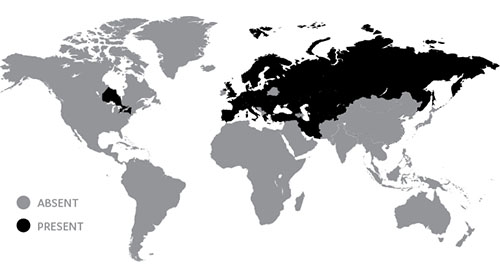
Similar species
Rhagoletis cerasi is similar to other species of Rhagoletis, some of which are of unknown status; however it is readily distinguished by its unique wing colour pattern: short broad transverse fuscous band at base, a broad transverse fuscous band across centre from anterior margin to hind margin and enclosing r-m crossvein, a short narrow transverse fuscous band from anterior margin to vein R4+5 and an inverted L-shaped band at apex of wing, the stem of which encloses dm-cu crossvein.
Pest Status
- Exotic
- A major pest of commercial cherries throughout its geographic range
Attractant/Lure
No known record
